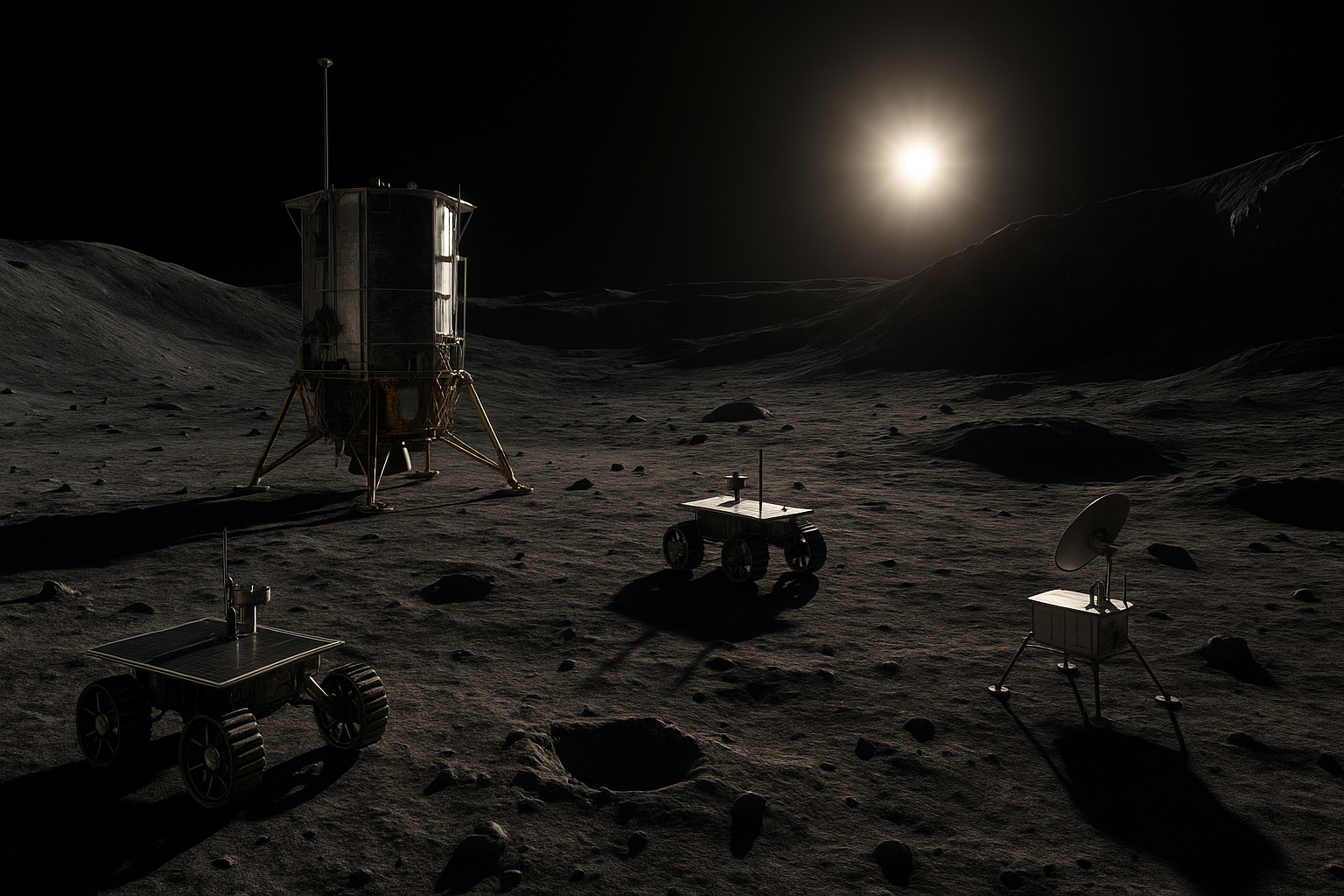In a significant leap toward the future of space exploration, NASA selects Firefly Aerospace to spearhead a bold lunar mission under the Artemis campaign. With a contract worth $176.7 million, Firefly Aerospace will deliver two cutting edge rovers and three stationary science payloads to the Moon’s South Pole region an area scientists believe holds clues to Earth’s cosmic history and future human habitation.
A New Chapter in Lunar Exploration Begins
NASA’s Artemis program is rewriting the rules of lunar exploration, emphasizing collaboration with commercial companies and international agencies. In this historic mission, NASA selects Firefly not only for its technical competence but also for its commitment to innovation and sustainability.
This marks a turning point, said Joel Kearns, deputy associate administrator for exploration at NASA. We’re no longer just sending machines to gather data. We’re creating partnerships that will build the infrastructure for a future Moon based economy.
What Makes This Mission Unique?
Unlike past missions, this delivery will mark the first time NASA deploys multiple rovers alongside a suite of stationary instruments in a single CLPS (Commercial Lunar Payload Services) delivery. These tools will be used to study the chemical composition of the Moon’s South Pole, including permanently shadowed craters where water ice may exist.
Two mobile rovers to navigate the harsh terrain and gather surface level data. Three stationary instruments for localized analysis. International collaboration, including the Canadian Space Agency and University of Bern, to provide specialized instrumentation.
Why the South Pole?
The lunar South Pole has emerged as a top priority for exploration due to its unique conditions. Unlike the near side of the Moon, the South Pole contains areas in permanent darkness, possibly harboring water ice crucial for future long term habitation.
Discovering usable water on the Moon changes everything, says Dr. Hannah Wexler, a planetary scientist at the Lunar and Planetary Institute. Water is not just life sustaining. It’s also a potential source of fuel and oxygen, which could support future human colonies and deep space missions.
Firefly Aerospace’s Rise to Lunar Fame
Based in Cedar Park, Texas, Firefly Aerospace has rapidly evolved from a startup into a trusted NASA contractor. Known for their Alpha launch vehicle and innovative lunar lander design called Blue Ghost, Firefly was selected under the CLPS initiative to bridge scientific goals with entrepreneurial agility.
The company previously demonstrated mission success with suborbital and low Earth orbit flights. Their strong record, combined with reliable infrastructure, made them a standout when NASA selected Firefly for this prestigious mission.
The Stakes of Artemis
The Artemis program is about more than just returning to the Moon. It’s about establishing a sustainable human presence beyond Earth. With companies like Firefly leading tech and science payload deliveries, NASA can focus on crew readiness, long term habitation, and interplanetary missions like Mars.
By partnering with firms like Firefly, NASA gains flexibility and innovation, says Dr. Marcus Tillman, an aerospace policy expert. This isn’t just outsourcing. It’s the beginning of a commercial space ecosystem that makes lunar colonization viable.
For Erica Lee, an aerospace engineer at Firefly, this mission is personal. I grew up watching shuttle launches with my father. Being part of a team that’s actually sending tools to the Moon it’s emotional, she says. This isn’t science fiction. It’s science fact, and it’s happening now. Such stories reflect the human side of space exploration, turning complex missions into inspirational narratives.
What This Means for the Future
As NASA selects Firefly to deliver groundbreaking tech and science to the Moon, a new era is beginning. The implications are enormous, Technological advancement Rovers and instruments will gather data to inform future missions and Moon based infrastructure.
International collaboration: With countries like Canada and Switzerland involved, lunar exploration becomes a shared human endeavor.
Commercial momentum: Firefly’s selection sets a precedent for startups and private companies aiming to make their mark in space.
We’re laying the groundwork for a permanent lunar base, NASA officials affirm. And Firefly is part of that foundation.
The decision that NASA selects Firefly reflects a broader vision of what lunar exploration will look like in the 21st century: collaborative, innovative, and sustainable. This mission isn’t just about sending rovers and sensors. It’s about building a bridge between Earth and the stars one scientific payload at a time.
With Artemis blazing a trail and companies like Firefly lighting the path, humanity’s next steps on the Moon may soon be as routine as satellite launches are today.

